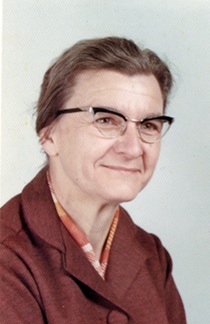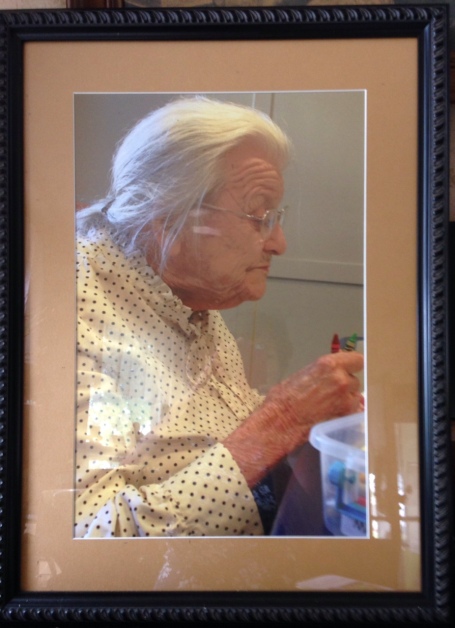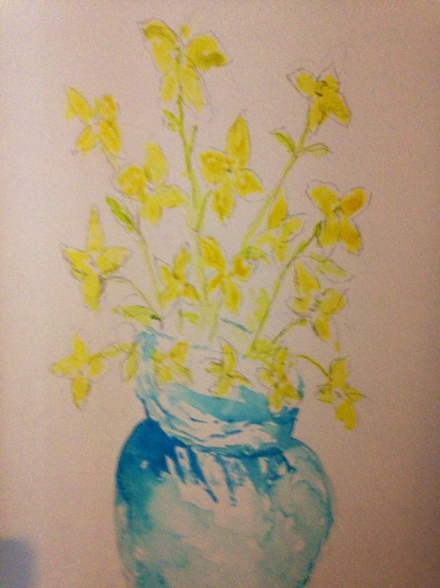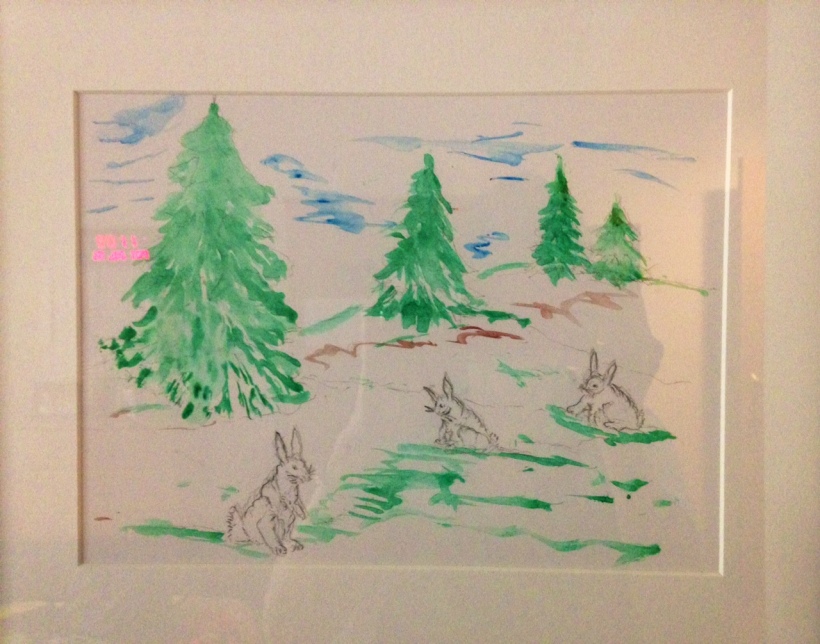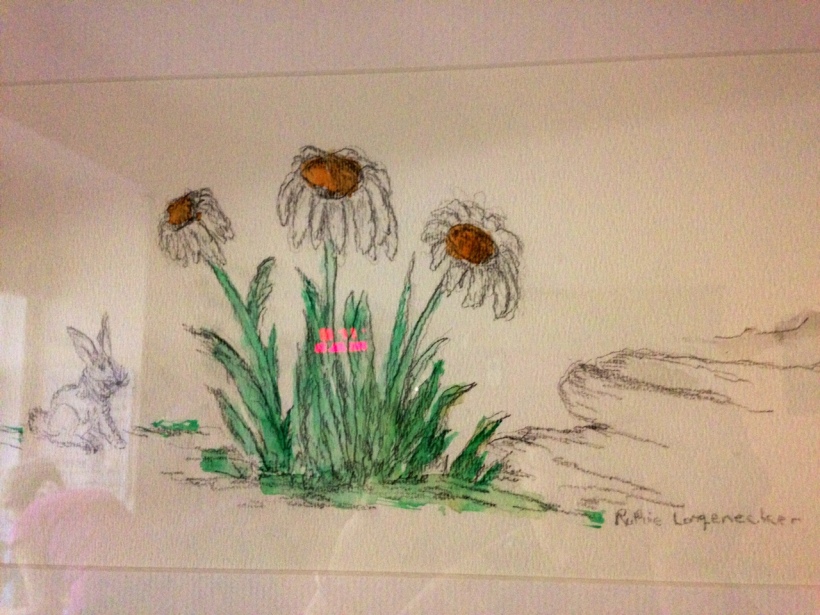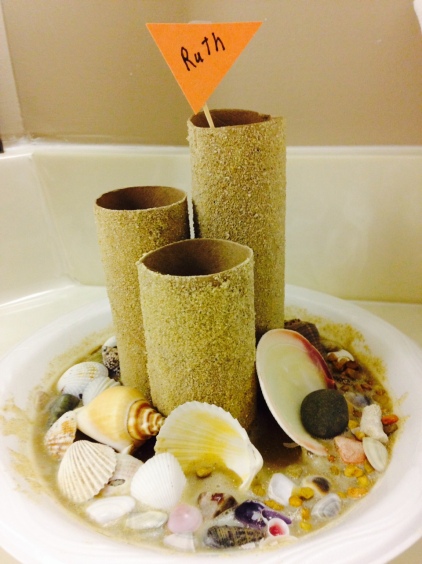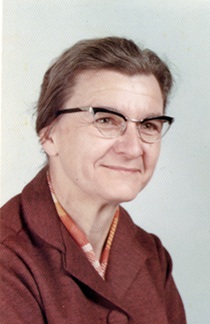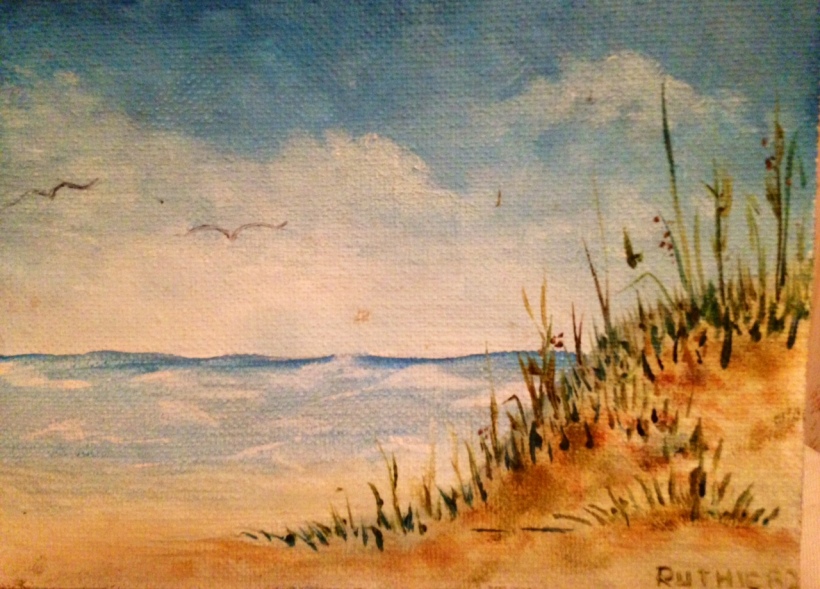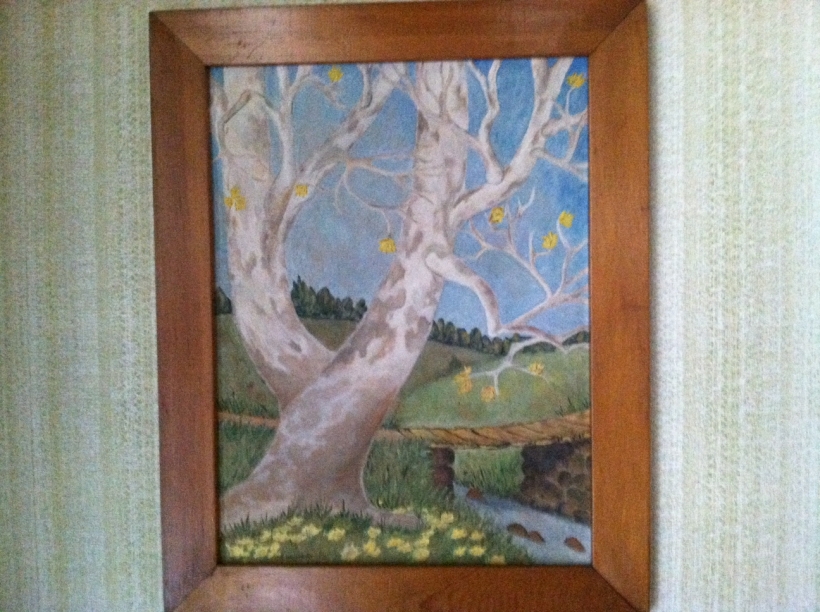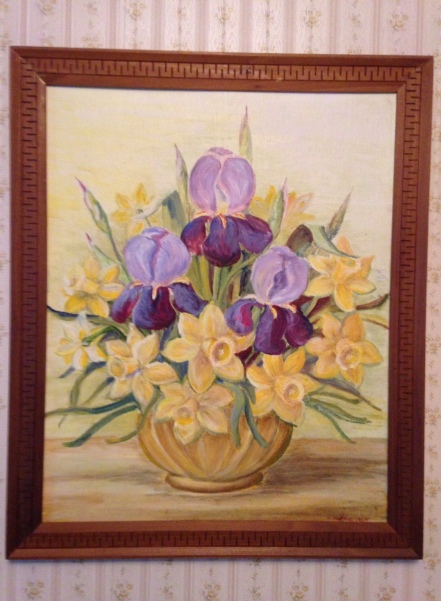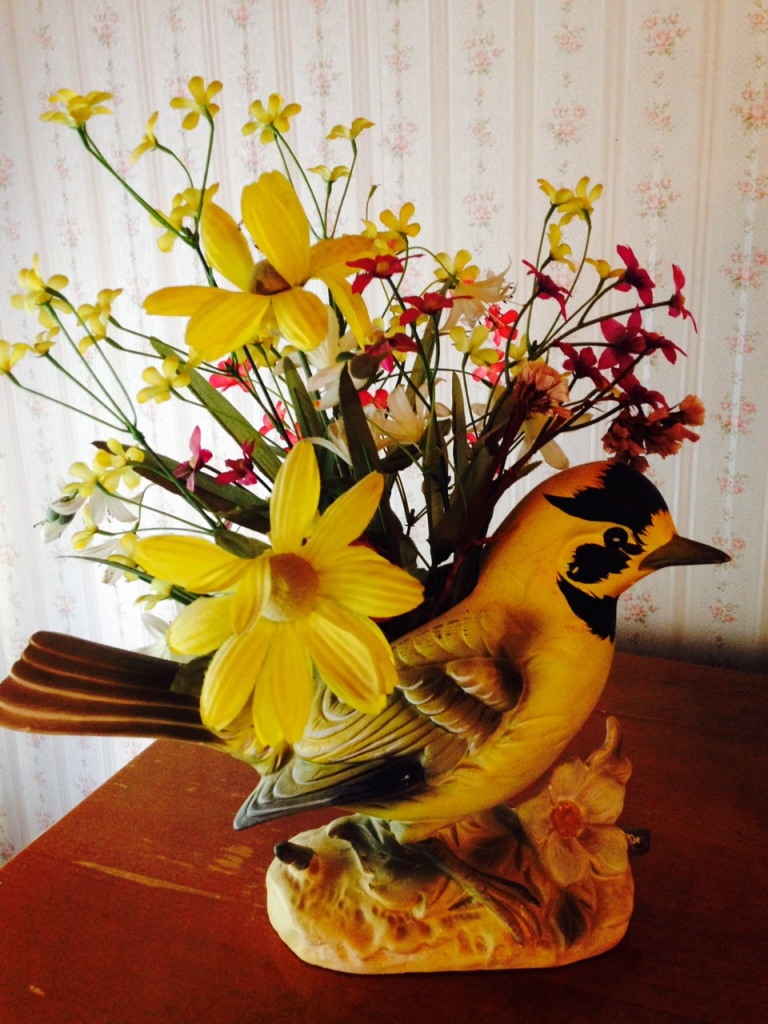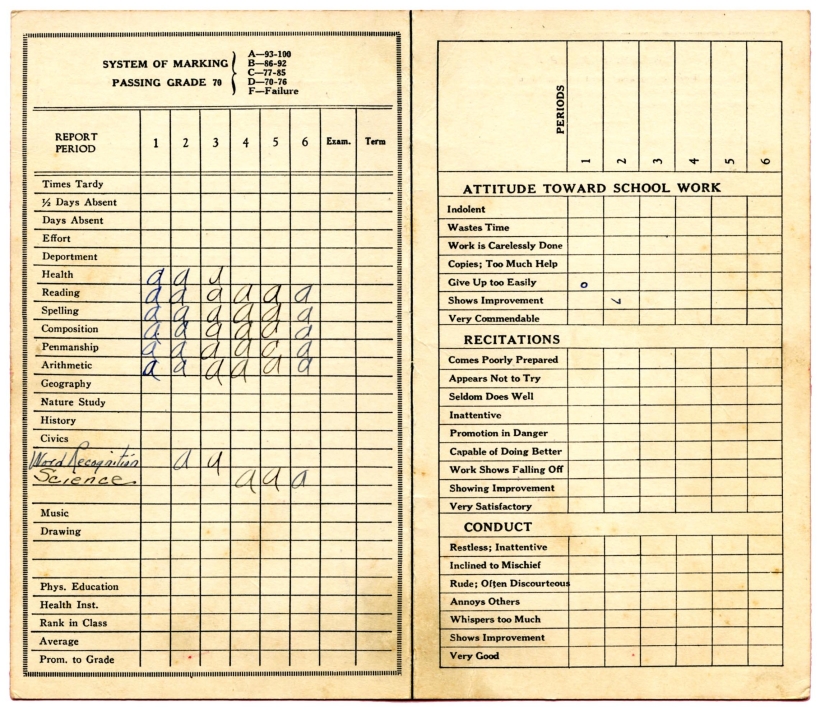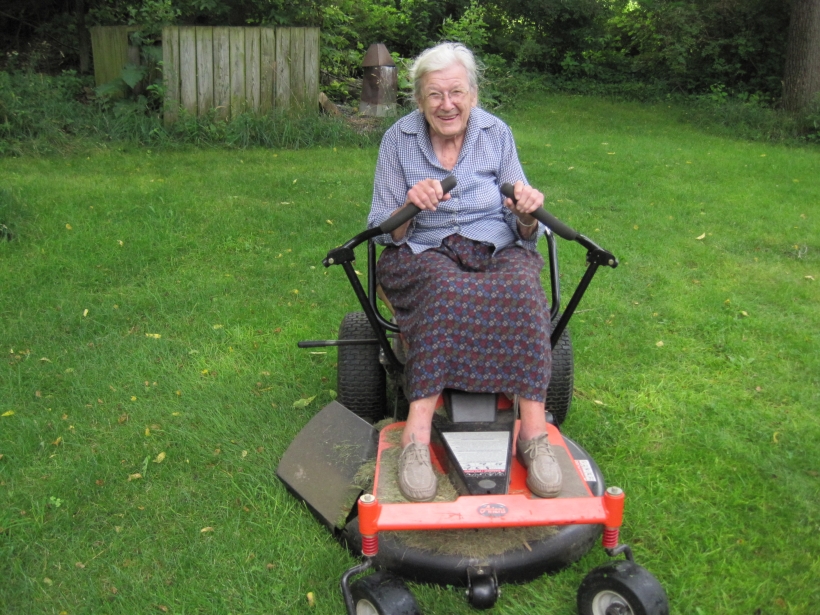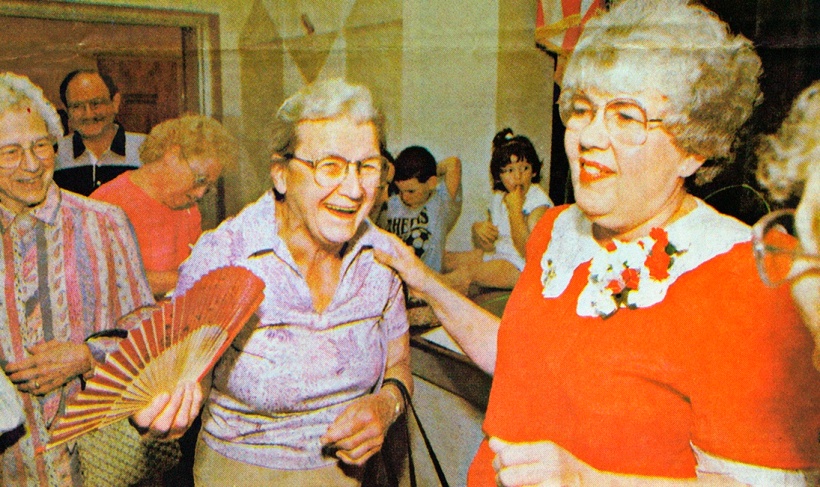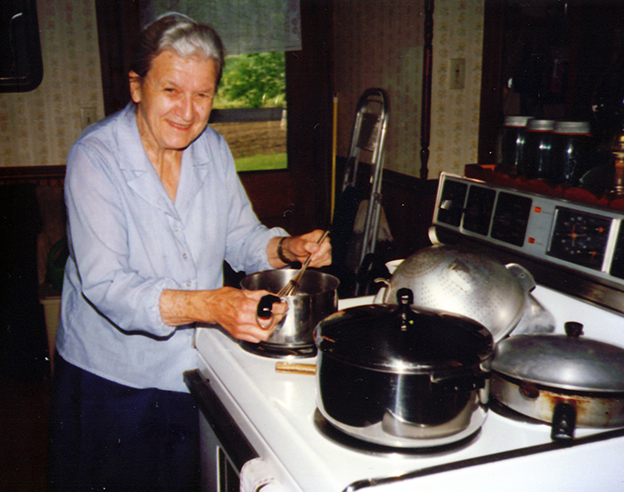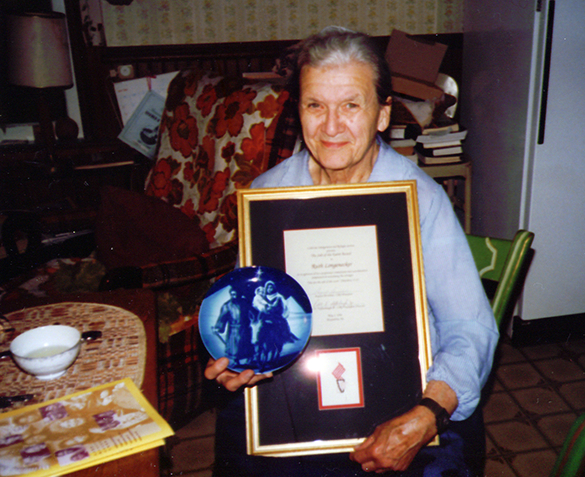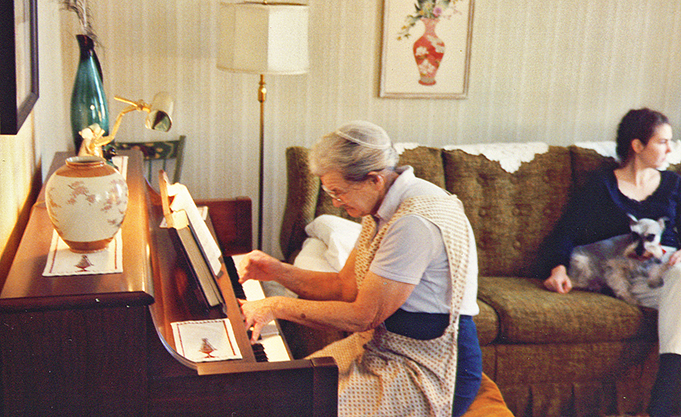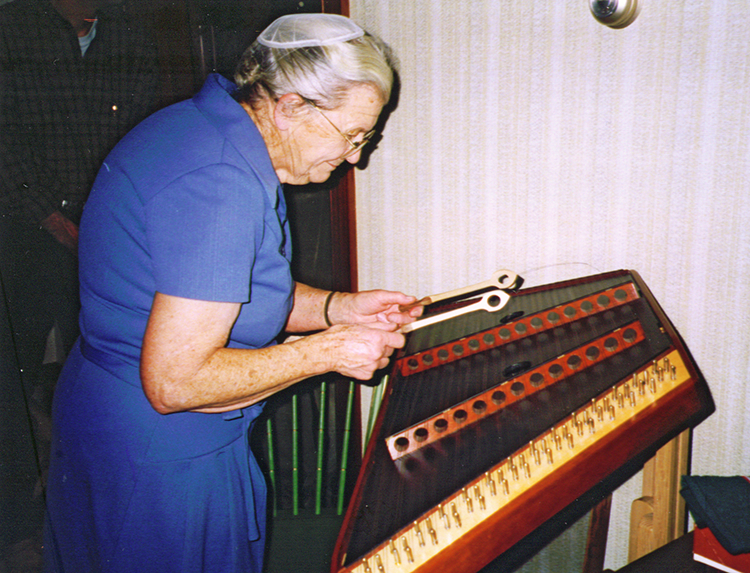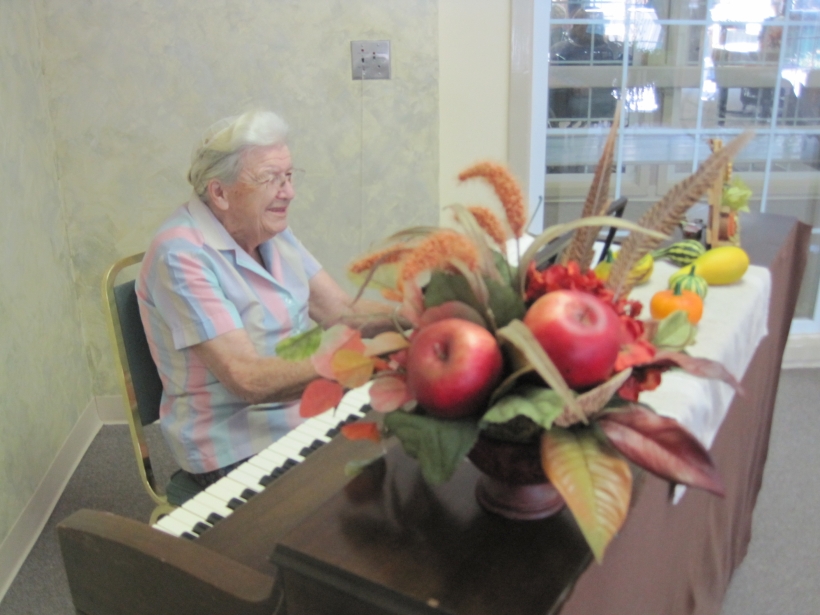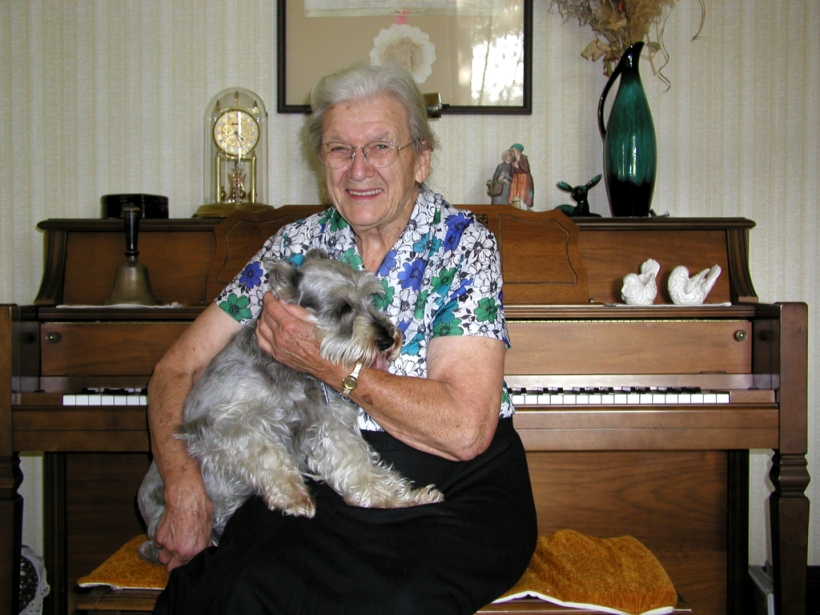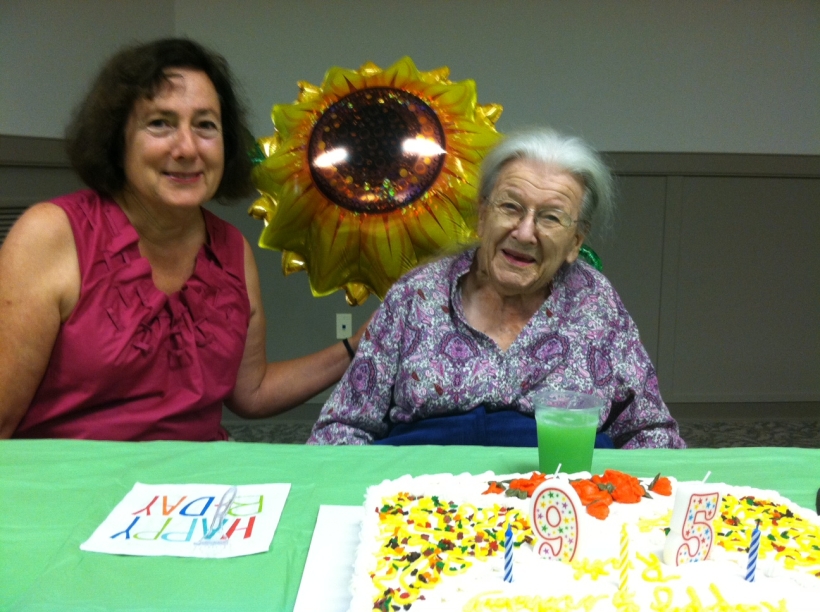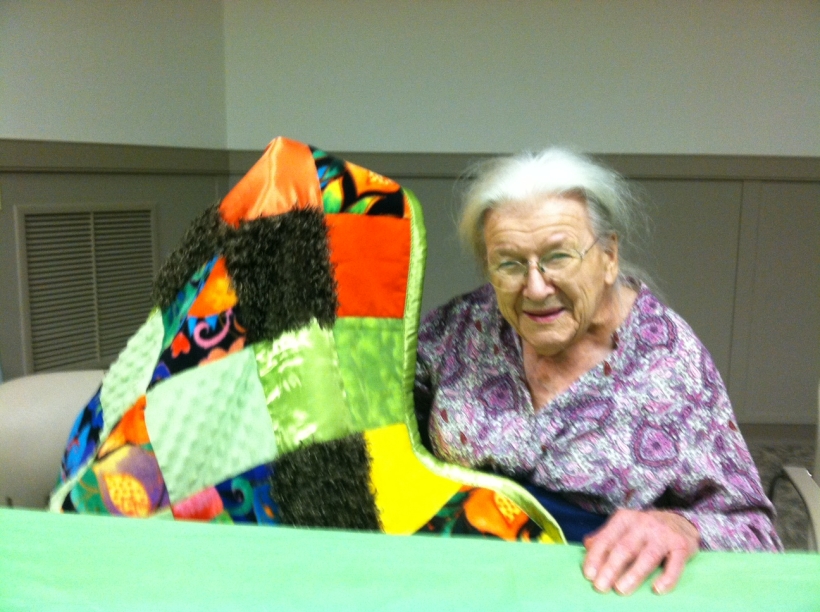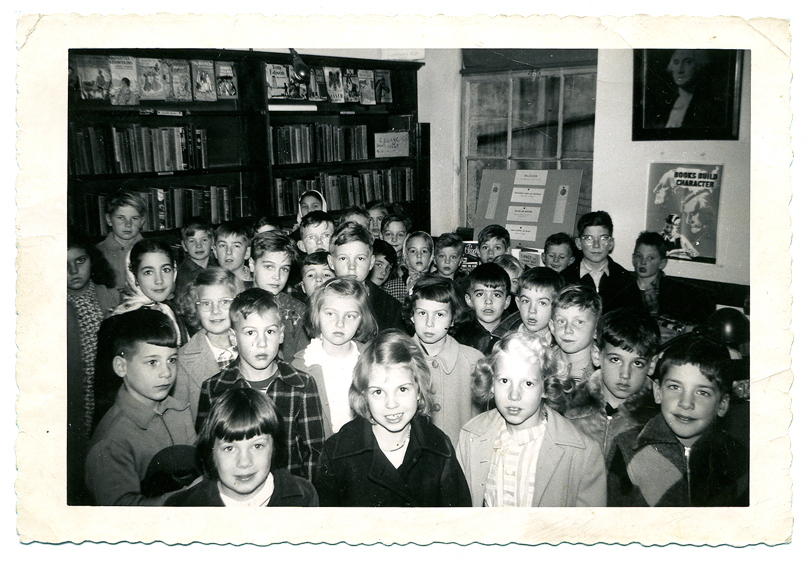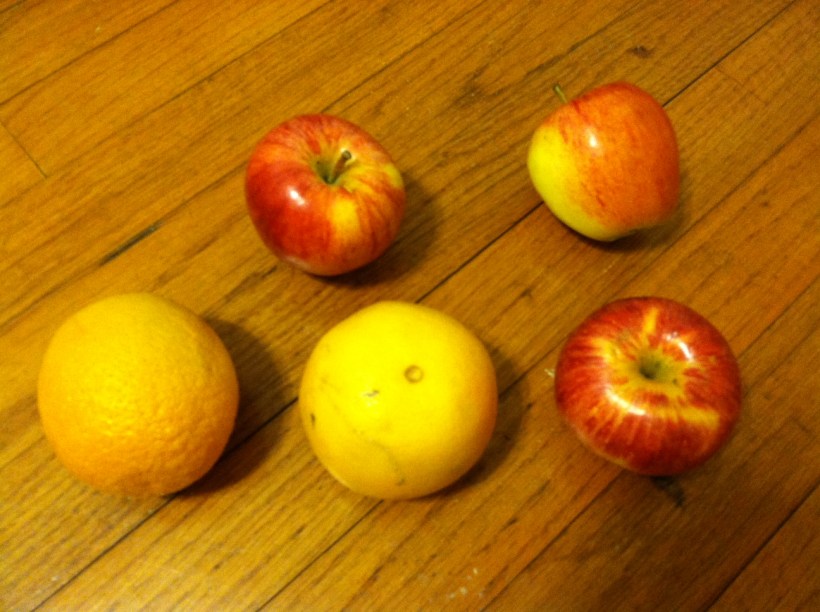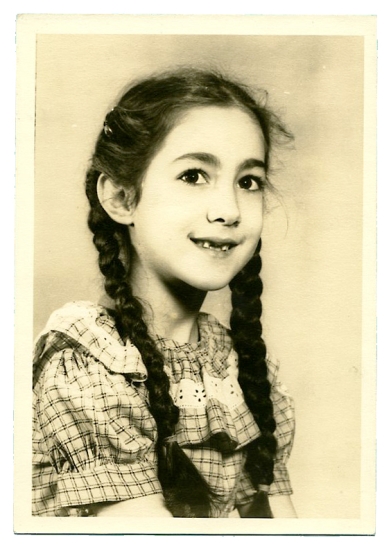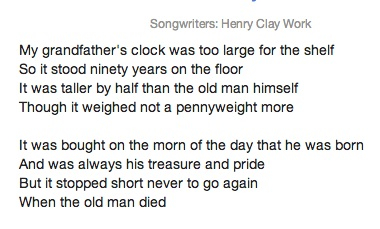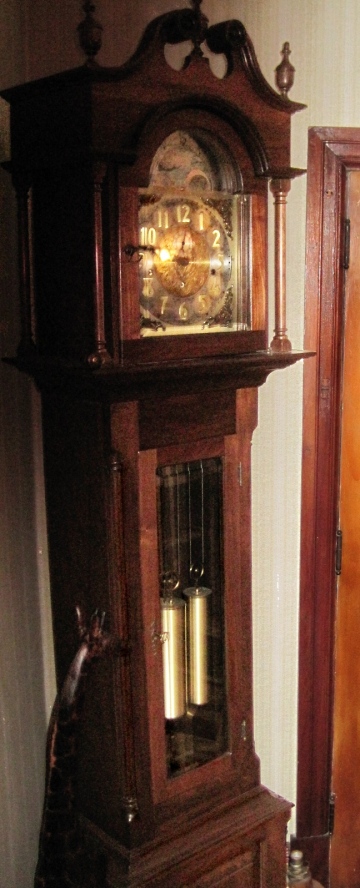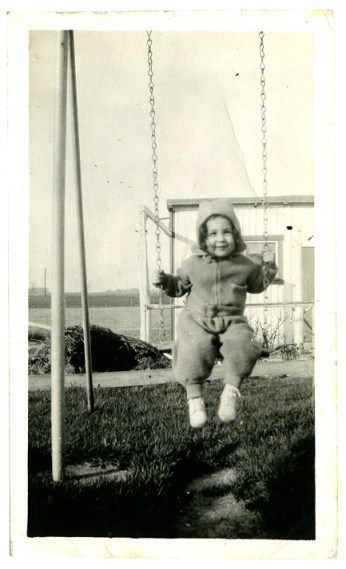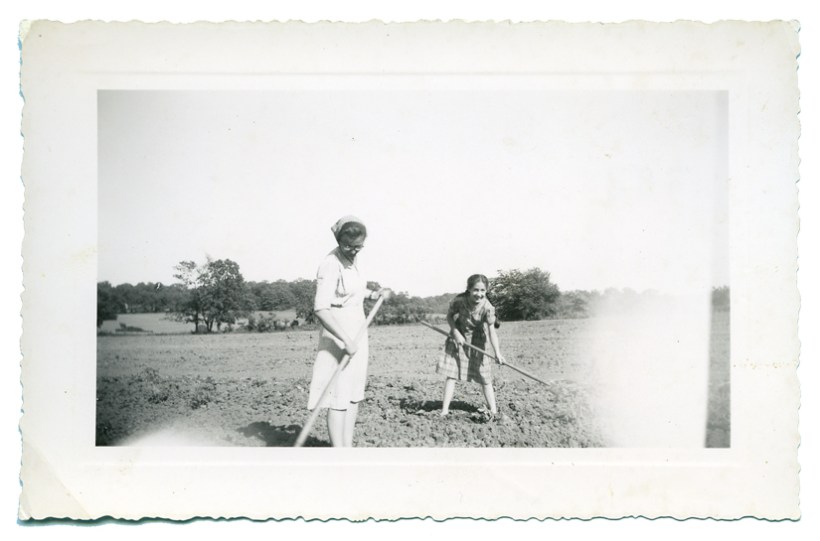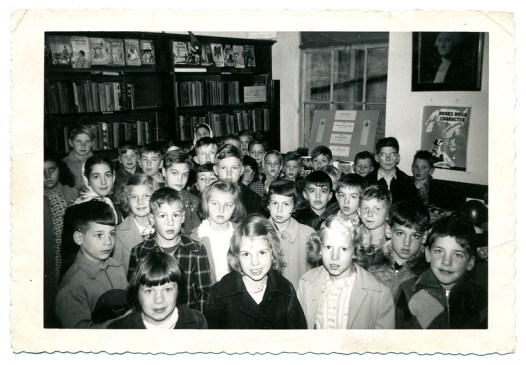Yesterday, Tuesday, October 4, my Aunt Ruthie celebrated her 98th birthday. Born in 1918, she is a towering figure in my life and, and along with Mother and Grandma Longenecker, my strongest mentor. And she has been mother/teacher to many.
* * *
See the determination in that little girl’s face!
Her mother, my grandma Fannie Longenecker, replying to my sister Janice’s questions for a sociology-class interview assignment, mentioned that “Ruthie was industrious, a busy-body, a tomboy who would take risks.”
Education
The blurb in her Elizabethtown High School yearbook photo acknowledged her brilliant mind. (She skipped two elementary grades.) The description below also foretold her teaching career and hinted at the math skills she used in her long career as tax collector for West Donegal (PA) Township. She was so young when she began college at age 16, she required a chaperone.
Ruthie attended business school near Elizabethtown and earned a bachelor’s degree from Eastern Mennonite College in Harrisonburg, Virginia. She earned a master’s degree in education from Temple University in Philadelphia.
Teaching Career
Country children in rural Lancaster County usually did not attend kindergarten. Aunt Ruthie created kindergarten for me as a 5-year-old at Cherry Hill School, close to Milton Grove, PA. I remember bouncing up and down over hills and dales riding in the back seat of her brown Hudson on the way to Cherry Hill. Two or three days a week I learned the alphabet and numbers sitting along side first graders. In the one-room classroom with eight grades, I loved singing: “Good morning merry sunshine, how did you wake so soon? You scared away the little stars and shined away the moon.”
Hundreds of students remember Miss Longenecker at the age pictured below at Rheems Elementary School where she taught sixth grade and served as principal. Earlier in her career there, the school board (probably all male) refused to acknowledge her true function as principal and condescendingly referred to her as “head teacher.”
It galls me even now to disclose this awful truth, and so I ask:
What title goes to the person (man or woman) who approves the curriculum, supervises textbook orders and presides over faculty meetings, responding to parental complains. It’s the PRINCIPAL I tell you!
Host to Refugees and Immigrants
This 1979 photo below shows Grandma Longenecker, Aunt Ruthie and Phuong Le, a refugee from Vietnam, a young girl they welcomed into their home as a daughter. Phuong was the first among dozens who sought shelter from war-torn countries. She made the most of Aunt Ruthie’s mentoring from 1976-1982, later succeeding in a career as a computer programmer and raising a fine family.
Lutheran Social Services acknowledged Ruthie’s magnanimous contribution to refugees and immigrants with The Salt of the Earth Award, a plaque which recognized “her exceptional commitment and warmhearted compassion in welcoming the stranger. ‘Ye are the salt of the earth’ Matthew 5:13” (script from plaque)
Love of Family
“You are always welcome here,” were Aunt Ruthie’s words after my sisters and I married and moved away from home. She labored in the kitchen when her nieces from Florida and Michigan nested in her home during vacations.
In a small way, we returned the favor and relished her enjoying the citrus we bought from our orange and grapefruit trees in Florida.
Appreciation for Music
A music lover, Ruthie played the piano vigorously. If the apron is any indication, she is relaxing here after over-seeing meal making, her grand-niece Crista in the background.
Into her early 90s, she played dinner music for the elderly ( ! ) at Rheems Nursing Home. “They don’t have anybody doing much for them,” she said.
Playing the dulcimer – wholeheartedly!
Animal Friends
Through the years, her Schnauzers, Fritzie I, II, III, and IV have been her ever-present companions, protecting her by day and warming her feet at night in bed.
The last Fritzie, # IV, has found a dog’s paradise, adopted by teen-age Jason and his family.
Love for Learning
Books, magazines, and the Lancaster Intelligencer Journal/New Era have kept her curious mind informed.
During most of her stay at Landis Homes, she has whizzed through Word Finds puzzle books.
Hands in the Soil
A life-long gardener, Aunt Ruthie has always had her hands in rich Pennsylvania soil. She was my hoeing companion in the 4 1/2 -acre tomato “patch” in Bainbridge, PA in the 1950s.

At home, she kept a large garden, the envy of passersby on old route # 230 that borders her property.
All summer long until Aunt Ruthie was almost 90, she mowed nearly an acre of grass on her land near Rheems, preferring outdoor work to household duties.
For decades, she kept a strawberry patch and a vegetable garden, bordered by flowers. Now the flowers come to her.

She has had a goodly heritage

Both in back row: My dad Ray Longenecker with zippered sweater and Aunt Ruthie on right with V-necked cape dress and white covering strings
Gutes Leben, her high school yearbook blurb concluded.
Yes, Aunt Ruthie, has enjoyed a good life.
Happy Birthday, Aunt Ruthie!

Coming next: Heart on Fire, Guess Who’s Voted for President!



